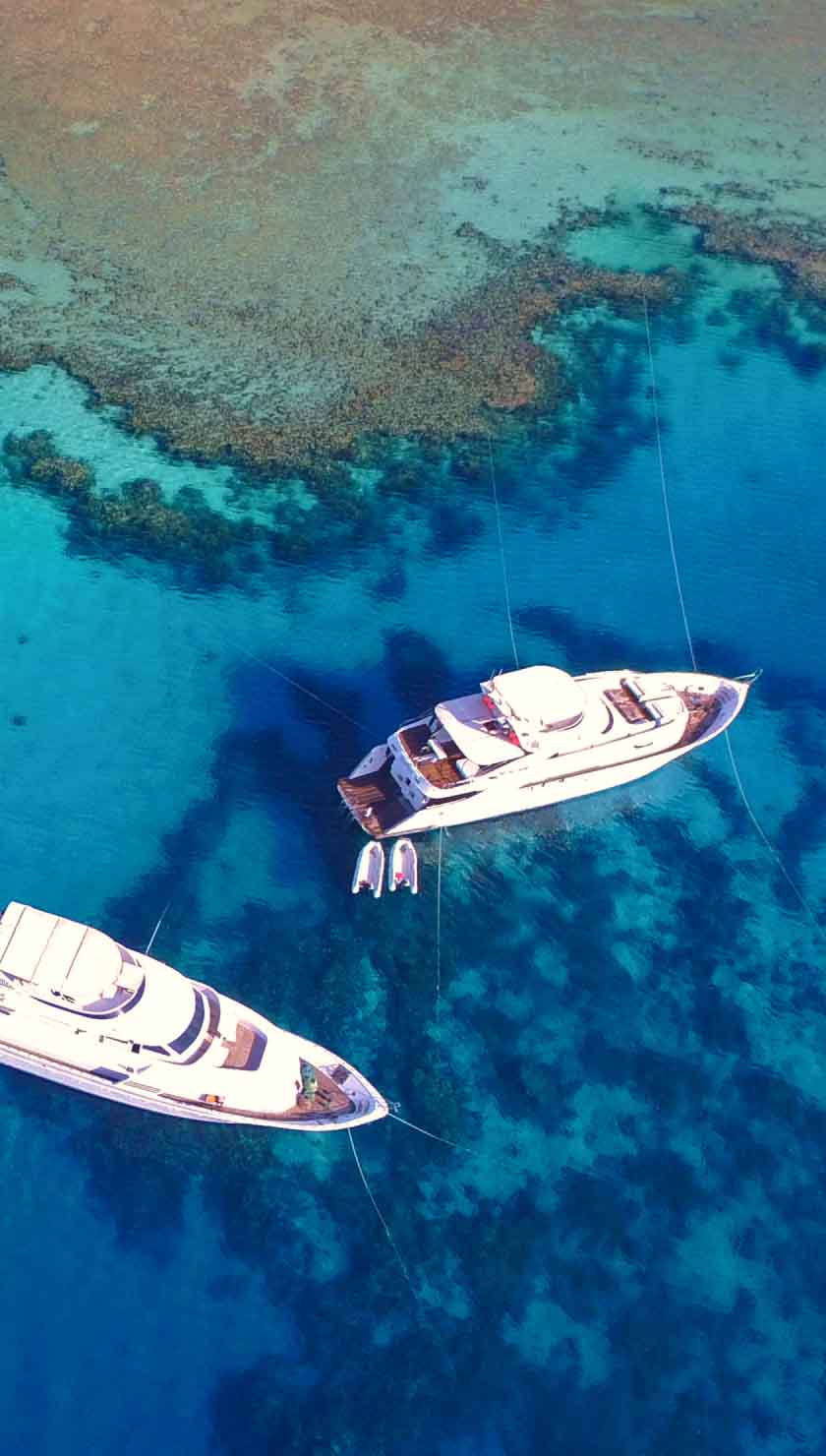Liveaboard Diving in Rocky
What To Expect On A Rocky Island Liveaboard
Liveaboards to Rocky Island usually visit here as part of a Southern Red Sea itinerary. Lying in Foul Bay just 5 kilometres to the southeast of Zabargad, Rocky Island squeezes almost all of the reasons to visit the Egyptian Red Sea as a diving destination into one tiny island. Surrounding the entire island is a convenient plateau that delivers excellent views during the safety stop. It should be noted that currents here can swing from the prevailing northeast, and shift to originate from the south. Current direction must always be checked while planning the dive. The shores of Rocky Island are split into 3 main diving zones: the south, the east and the north shore. A good selection of Egyptian liveaboards are available which include dive safaris to Rocky Island.
What you can see
Whilst on your liveaboard cruise to Rocky Island you will explore the 3 main areas located in this dive area;
The South
Perhaps the only site on Rocky Island suitable for newer and less experienced divers, this is by far the most sheltered site. Prevailing winds are blocked by the landmass of the island, and average depth is around 60 feet (18 m). The shelter also helps to protect the incredibly delicate and intricate corals, which in turn support an abundance of reef fish. Visibility is fairly typical for the Red Sea at around 65 feet (20 m), and remains roughly the same over all the sites. The south shore has particularly inviting topography with many overhanging features and swim-throughs, making for exhilarating exploration with a good underwater torch.
Broad purple branches of acroporas, and hugely elaborate brain corals make for an outstanding display of stony coral species, while wisps of pink and brown cabbage corals form considerable structures on the reef, being a semi-aggressive species. Several types of nephtheidae can also be seen, a soft coral that resembles branches of broccoli, and exhibit a wide range of colours from reds, to oranges, whites and purples. At night, these delightful corals extend their tentacles to catch passing food, and share a greater resemblance to a tree in full bloom.
The East
The eastern shore, although quite exposed to the current (especially on the shallow plateau), offers a huge variety of features from shallow coral gardens to sheer-faced walls. Undertaken as a drift dive, the more turbulent and deeper water (average depth of 85 feet, or 25 m, and a maximum of 160 feet or 50 m) attracts larger fish species, including scalloped hammerhead, and oceanic whitetip sharks. Barracuda also patrol the reef, keeping their menacing, black eyes on the lookout for easy prey. Shoals of spectacularly striped grunts, bright blue surgeonfish and faded-red snappers leisurely swim between substantial coral structures, presenting excellent photo opportunities.
Blazing orange fire corals with white-hot tips are found in shallower depths, along with most of the hard and stony corals. With depth, the coral generally shifts to a greater proliferation of soft species, like the mushrooming plumes of xenia and the beautiful nephtheidae. Spiny, tree-like black corals are also found in deeper water here.
The North
The northern shore receives the full brunt of any prevailing weather, and is suitable only for the more experienced diver. The landscape is very different with rocky outcrops, encrusted with soft and stony corals, and a sheer wall. The dive is usually a fast drift dive, and one should dive fairly deep to avoid surges of current nearer the surface. Average depth is around 65 feet (20 m), with a maximum depth of 160 feet (50 m).
Strikingly marked rabbitfish, and the strange looking unicorn fish like to move in small groups over the reef here. Most species found are schooling species, but larger Napoleon wrasse and groupers are a common sight.
Getting there
Situated just south of Zabargad Island, Rocky Island can only be visited by liveaboard due to the distance from the nearest ports. Egyptian liveaboards navigating to Rocky Island usually make a stop at Zabargad first, before heading over. Departures tend to be from either Marsa Ghalib or Marsa Alam. The nearest airport is Marsa Alam International Airport, which is actually closer to the seaport of Marsa Ghalib, than that of Marsa Alam.











